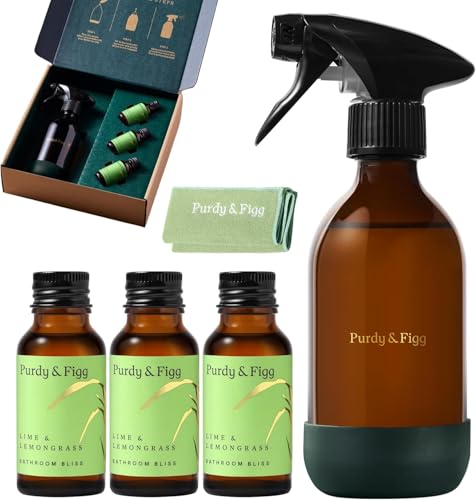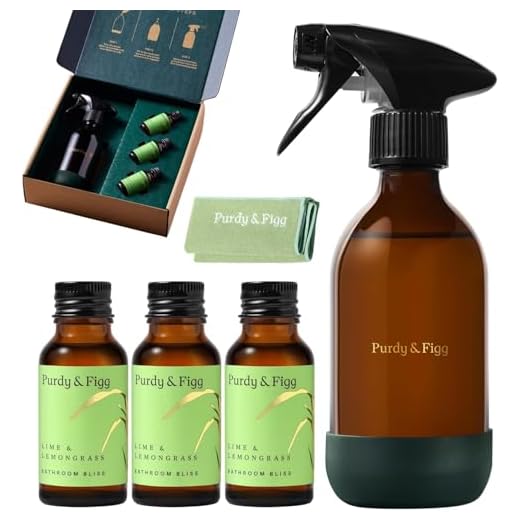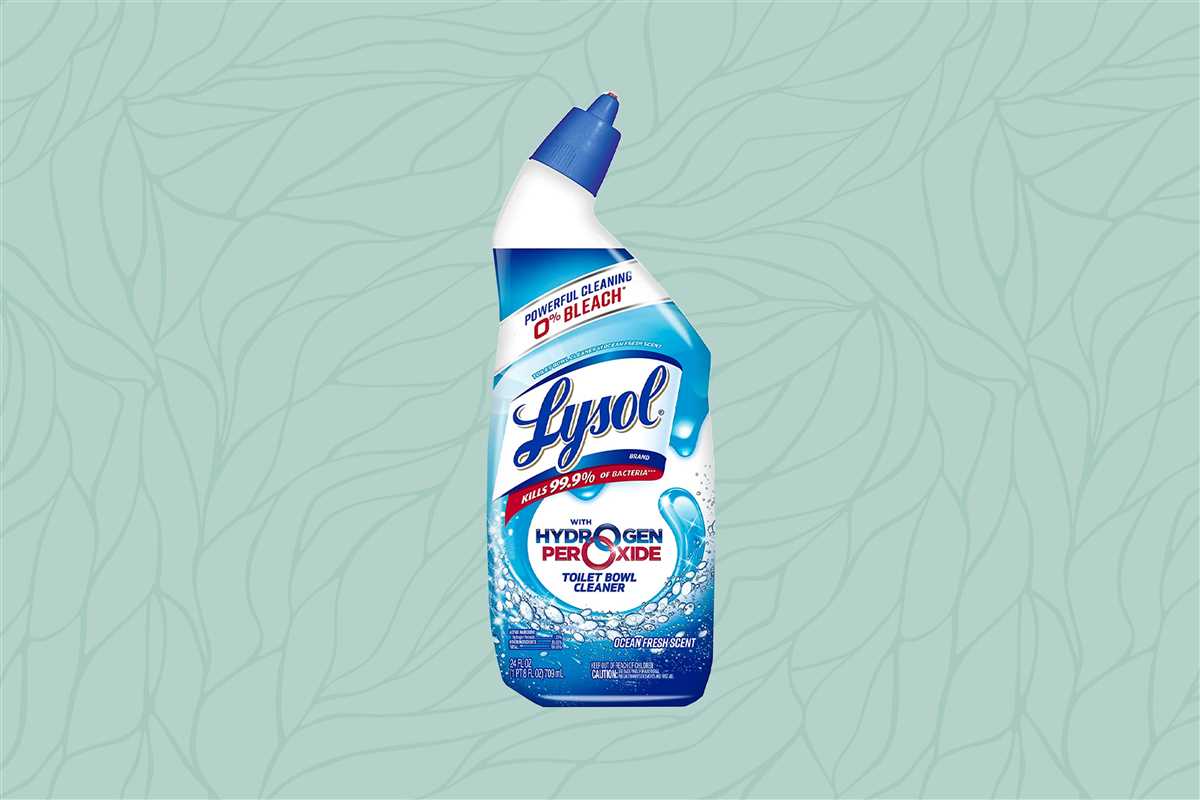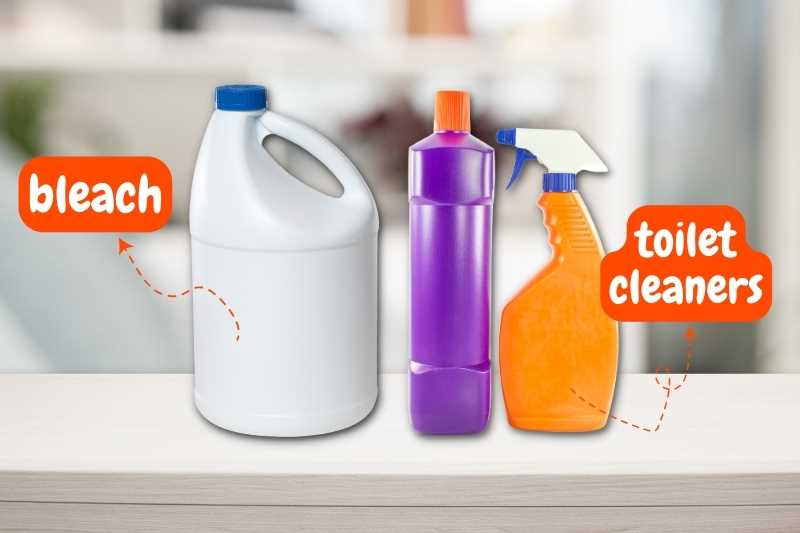




Keeping your bathroom clean and free from germs is an essential part of maintaining a healthy home. When it comes to cleaning your toilet, there are two common options: bleach and toilet cleaner. While both products serve the same purpose, they have distinct differences that make them better suited for specific situations.
Bleach, a powerful disinfectant, is known for its ability to kill a wide range of germs, bacteria, and viruses. It contains chlorine, which is highly effective in eliminating stubborn stains and odours. Bleach is useful for deep cleaning and sanitizing your toilet bowl, especially in cases of tough stains or mold and mildew buildup.
On the other hand, toilet cleaner is specifically formulated to tackle the unique challenges of toilet cleaning. It often contains chemicals like citric acid or hydrogen peroxide, which help break down and remove urine stains and mineral deposits. Toilet cleaner is designed to be used regularly, as it helps to maintain a clean and fresh toilet bowl with minimal effort.
In conclusion, both bleach and toilet cleaner have their own strengths and purposes. Bleach is ideal for periodic deep cleaning and disinfection, while toilet cleaner is best for regular maintenance. It’s important to read the instructions carefully and use the appropriate product for each situation to ensure a clean and hygienic bathroom.
Bleach: A Powerful Cleaning Agent
Bleach is a highly effective cleaning agent that is commonly used in households and industries to remove stains, kill bacteria, and disinfect various surfaces. Its strong oxidizing properties make it an essential tool in maintaining cleanliness and hygiene.
How Does Bleach Work?
Bleach contains a chemical compound called sodium hypochlorite, which is responsible for its cleaning power. When bleach comes into contact with organic matter, such as dirt, stains, or microorganisms, it oxidizes and breaks down these substances, rendering them harmless.
The oxidizing action of bleach is particularly useful in removing tough stains from clothing, countertops, and other surfaces. It can effectively break down and remove substances like blood, coffee, ink, and food stains.
Disinfecting Properties
In addition to its stain-removing abilities, bleach is also valued for its disinfecting properties. It can kill a wide range of bacteria, viruses, and fungi, making it a valuable tool for sanitization. This is why bleach is commonly used to clean bathrooms, kitchens, and other areas where germs and pathogens are likely to be present.
Precautions When Using Bleach
While bleach is a powerful cleaning agent, it is important to use it with caution. Here are some key precautions to keep in mind:
- Always follow instructions: Read and follow the instructions on the bleach bottle carefully to ensure safe and effective use.
- Ventilation: Make sure the area you are working in is well-ventilated to avoid inhaling any fumes.
- Protective gear: Wear gloves and goggles to protect your skin and eyes from direct contact with bleach.
- Mixing: Never mix bleach with other cleaning products, as this can create harmful gases.
- Surfaces: Test bleach on a small, inconspicuous area before using it on a larger surface to ensure it does not cause any damage or discoloration.
By following these precautions, you can safely harness the power of bleach to effectively clean and disinfect your surroundings.
Toilet Cleaner: Specialized for Bathroom Cleaning
When it comes to cleaning the bathroom, a specialized toilet cleaner is an essential tool for maintaining cleanliness and hygiene. While bleach can be effective in killing germs and bacteria, a dedicated toilet cleaner is specifically designed to tackle the unique challenges that come with cleaning toilets.
Effective against stubborn stains
Toilet cleaners are formulated with powerful ingredients that are specifically designed to remove tough stains, such as mineral deposits, limescale, and rust. These cleaners often contain acidic compounds, such as hydrochloric acid or citric acid, which can break down hard water stains and remove them effectively.
Unlike bleach, which may lighten the color of some stains, a toilet cleaner is designed to target and eliminate the source of the stain, leaving your toilet bowl clean and sparkling.
Kills bacteria and eliminates odors
Bathrooms can be breeding grounds for bacteria, germs, and unpleasant odors. Toilet cleaners are formulated with disinfectant properties to effectively kill bacteria and germs, ensuring a hygienic environment. They also often contain fragrances that leave a fresh and clean scent behind.
Using a toilet cleaner regularly not only ensures a clean toilet bowl but also helps prevent the growth of mold and mildew, which can lead to unpleasant odors and health issues.
Safe for use on porcelain
Toilet cleaners are specifically formulated to be safe for use on porcelain surfaces, which are commonly found in toilets. They are unlikely to cause any damage or discoloration to porcelain when used as directed.
On the other hand, bleach can be too harsh for certain surfaces and may cause damage or discoloration if not used properly. It is important to follow the instructions carefully to avoid any potential damage to your toilet or other bathroom fixtures.
In conclusion, while bleach can be used for general cleaning purposes, a dedicated toilet cleaner is the best choice when it comes to maintaining a clean and hygienic bathroom. With their specialized formulas, toilet cleaners are capable of effectively removing stubborn stains, killing bacteria, and eliminating unpleasant odors, all while being safe for use on porcelain surfaces.
Key Differences Between Bleach and Toilet Cleaner

-
Bleach:
Trending NowCommercial Strength Sodium Hypochlorite LiquidSuperior patio cleaner for algae and mossTrusted for over 25 years, this liquid chlorine solution is perfect for disinfecting and cleaning patios, swimming pools, and more. Its concentrated formula ensures quick and effective results, removing tough moss and algae with ease.Bleach is a type of chemical compound that is used to disinfect and whiten surfaces. It is commonly used for cleaning and sanitizing various household items and surfaces, such as countertops, floors, and bathroom fixtures. Bleach is typically available in a liquid form and contains sodium hypochlorite as its active ingredient. It is a powerful disinfectant that can kill bacteria, viruses, and fungi.
-
Toilet Cleaner:
Toilet cleaner, as the name suggests, is specifically designed for cleaning toilets. It comes in various forms, including liquid, gel, and powder, and contains ingredients that are effective in removing stains, limescale, and other deposits commonly found in toilets. Toilet cleaners may contain different types of acids, such as hydrochloric acid or citric acid, to dissolve and remove tough stains and build-up.
Differences:
| Bleach | Toilet Cleaner |
|---|---|
|
|
It is important to note that both bleach and toilet cleaner can be harmful if ingested or used improperly. Always follow the instructions on the product label and take necessary precautions, such as wearing gloves and ensuring proper ventilation, when using these cleaning products.
When to Use Bleach
1. Disinfection
Bleach is commonly used for disinfection purposes. It effectively kills bacteria, viruses, and other harmful microorganisms that can cause illnesses. Whenever you need to sanitize surfaces or items, such as countertops, cutting boards, bathroom fixtures, or laundry, bleach can be a reliable choice.
2. Stain Removal
Bleach is also effective in removing tough stains, especially those caused by mold, mildew, or coffee. It can be used on white or color-safe fabrics, but always check the care label to ensure compatibility. Bleach can also help brighten white clothing or linens that have become dull or yellowed with age.
3. Odor Control
When dealing with strong odors, such as those caused by urine, bleach can be effective in neutralizing the smell. However, it’s essential to use bleach with caution and only in well-ventilated areas. Avoid mixing bleach with ammonia or acids, as it can create toxic fumes.
4. Sanitizing Tools
If you’re using tools that come into contact with potentially harmful substances, such as gardening tools or kitchen utensils, bleach can be used to sanitize them. Soaking the tools in a bleach solution for a short period can help kill germs and prevent contamination.
5. Emergency Water Disinfection
In emergency situations where the water supply may be compromised, bleach can be used as a last resort for disinfecting water. Follow specific guidelines on the proper amount of bleach to use per gallon of water to ensure its safety for consumption.
| Use caution: | Always follow safety guidelines when using bleach, such as wearing gloves and using it in a well-ventilated area. Keep bleach away from children and pets. |
| Avoid mixing: | Never mix bleach with ammonia, vinegar, or other household cleaners, as it can create potentially dangerous chemical reactions. |
| Test for colorfastness: | Before using bleach on colored fabrics or surfaces, test a small, inconspicuous area to ensure it won’t cause discoloration or damage. |
| Dilute properly: | When using bleach, always follow the instructions on the product label for dilution ratios and usage guidelines. |
When to Use Toilet Cleaner
Cleaning the toilet is an essential part of household maintenance. To ensure a clean and hygienic bathroom, it’s important to know when and how to use toilet cleaner effectively. Here are some instances when you should reach for your toilet cleaner:
1. Regular Cleaning:
Regular cleaning of the toilet is necessary to prevent the buildup of stains, odors, and bacteria. It’s recommended to clean the toilet at least once a week, depending on the usage and the number of people in your household. Use a toilet cleaner that is specifically formulated for removing toilet stains and germs. Look for a cleaner that contains disinfectants to kill bacteria effectively.
2. Stubborn Stains:
If you notice stubborn stains that are difficult to remove with regular cleaning, it’s time to use a toilet cleaner. Toilet cleaners are designed to tackle tough stains like hard water deposits, mineral buildup, and rust. Apply the cleaner directly to the stained areas, allow it to sit for a few minutes, and then scrub with a toilet brush. The active ingredients in the cleaner will help break down the stains and make them easier to remove.
3. Toilet Bowl Rings:
Toilet bowl rings are the result of mineral deposits and bacteria that accumulate around the waterline. These rings can be unsightly and difficult to remove. Toilet cleaners with targeted formulas for toilet bowl rings can effectively break down and dissolve the deposits. Apply the cleaner to the affected areas, let it sit for several minutes, and then scrub with a toilet brush to remove the rings.
4. Deep Cleaning:
Periodically, it’s important to give your toilet a deep clean to eliminate any hidden dirt and bacteria. Remove the toilet seat and clean the entire toilet bowl, including under the rim and inside the siphon jets. Use a toilet cleaner that is specifically designed for deep cleaning to ensure thorough sanitation. Follow the manufacturer’s instructions for the best results.
5. To Eliminate Odors:
Toilet cleaners not only remove stains and germs but also help eliminate unpleasant odors. If your toilet has a persistent odor problem, choose a toilet cleaner with an added fragrance or odor-neutralizing properties. The cleaner will help mask or neutralize any unpleasant smells, leaving your bathroom fresh and clean.
6. After Illness:

After someone in your household has been ill, it’s important to disinfect the toilet thoroughly to prevent the spread of germs. Use a toilet cleaner with strong disinfecting properties to kill any remaining bacteria or viruses. Pay extra attention to regularly disinfect frequently touched areas like the flush handle and toilet seat.
Remember to always follow the instructions on the toilet cleaner packaging and take proper safety precautions. Keep the bathroom well-ventilated while using the cleaner, and avoid mixing different cleaning chemicals together as it can produce hazardous fumes. With proper usage, toilet cleaner can help maintain a clean and germ-free toilet for you and your family.
FAQ
What is the difference between bleach and toilet cleaner?
Bleach is a chemical solution that is used primarily for disinfection and whitening. Toilet cleaner, on the other hand, is specifically formulated to remove stains, mineral deposits, and odor-causing bacteria in the toilet bowl.
Can I use bleach as a toilet cleaner?
Yes, bleach can be used as a toilet cleaner. It can effectively kill bacteria and remove stains. However, it is important to dilute bleach with water before using it, as it is a strong and potentially dangerous chemical. Alternatively, using a toilet cleaner that is specifically designed for toilets is recommended.
Is toilet cleaner safe to use on other surfaces?
Toilet cleaners are generally not recommended for use on other surfaces, as they may contain harsh chemicals that can damage or corrode certain materials. It is best to check the manufacturer’s instructions to see if the toilet cleaner can be used on other surfaces. If in doubt, it is advisable to use a multipurpose cleaner that is safe for a variety of surfaces.
Which should I use, bleach or toilet cleaner, to remove tough stains in my toilet?
If you have tough stains in your toilet, it is recommended to use a toilet cleaner that is specifically formulated to tackle stains. These cleaners are usually designed with ingredients that can effectively break down and remove stubborn stains. Bleach can also be effective, but it is best used for regular cleaning and disinfection rather than stain removal.
Can I mix bleach and toilet cleaner together?
No, it is not advisable to mix bleach and toilet cleaner together. Mixing these products can create harmful fumes and chemical reactions that can be dangerous. It is important to always read and follow the instructions on the cleaning products and avoid using them together unless specifically stated by the manufacturer.
When should I use bleach and when should I use toilet cleaner?
You should use bleach when you need to disinfect surfaces or whiten fabrics. It is effective in killing bacteria and can be used in areas such as kitchen countertops, bathroom sinks, and laundry. Toilet cleaner, on the other hand, should be used specifically for cleaning and removing stains and odors in the toilet bowl. It is not recommended to use bleach as a replacement for toilet cleaner.











